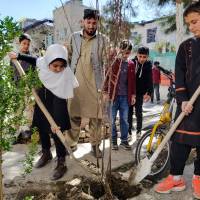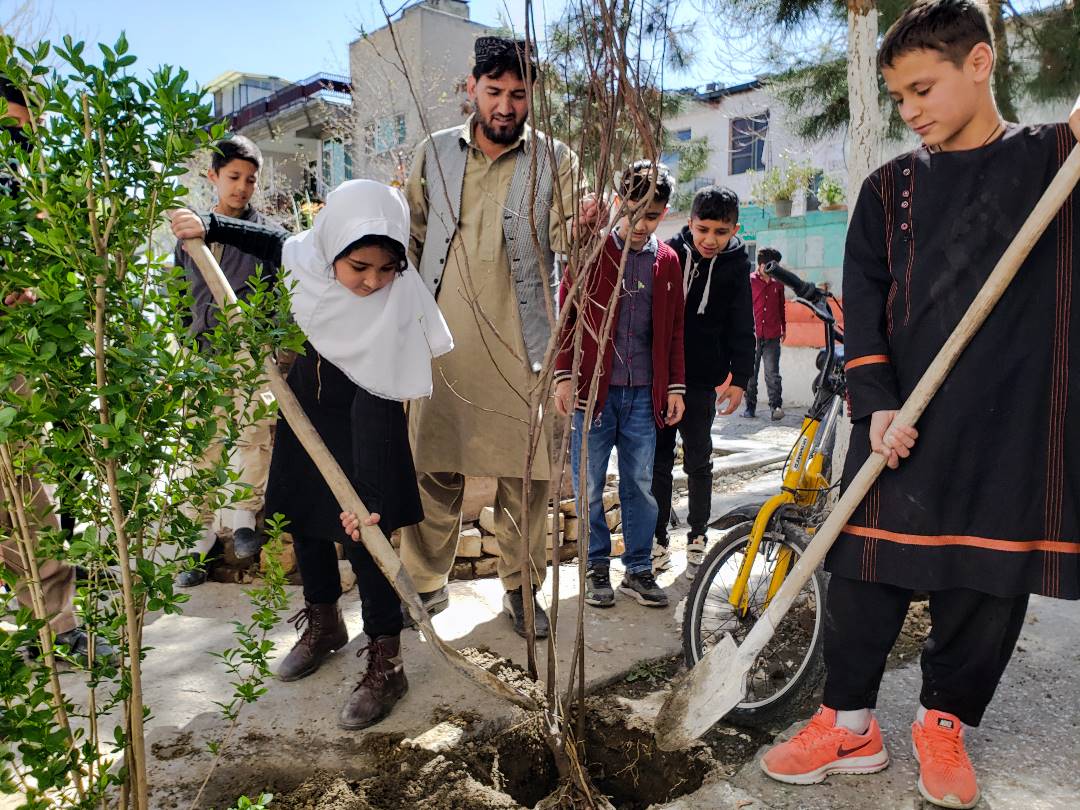Samira* and Abdul* stand on opposite sides of a dirt hole, shovels at the ready. A slender, leafless tree stands straight in the center of the earthen crater. All that’s left to do is scoop in some chalky dirt and let nature take its course. Samira hefts her shovel, which is surprisingly heavy, which she ignores. She wants to scoop more dirt than Abdul does. Behind her, a teacher and some classmates watch, eager for their turn.
Across Kabul, kids like Samira and Abdul are planting 348 trees in 15 Afghan schoolyards. These are the facts of the story. There are more facts, such as over 97% of Afghans live in poverty, up from 47% in 2020. In 2017, air pollution killed more Afghans than did conflict and violence. Or that a series of droughts have caused reservoirs and small Afghan lakes to dry up. But, none of these facts speak to the truth of experience. For these Afghan school kids, planting trees is more than a way to combat climate change and improve air quality. Planting trees is an affirmation of hope.
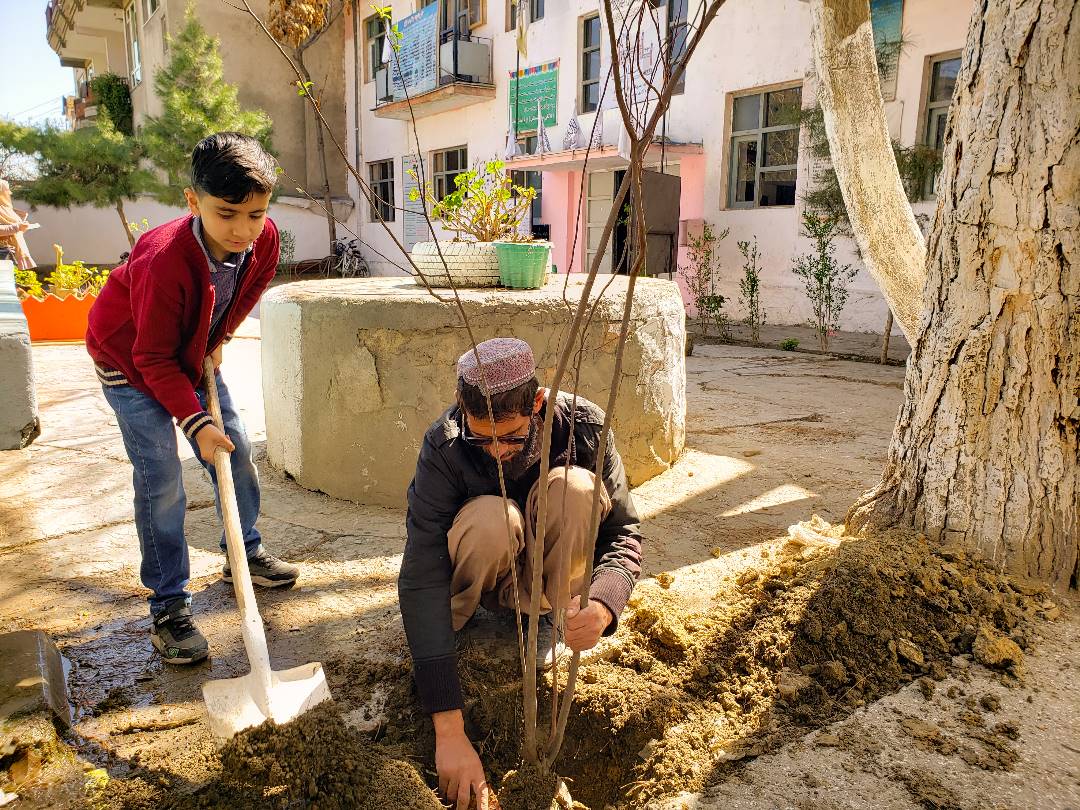
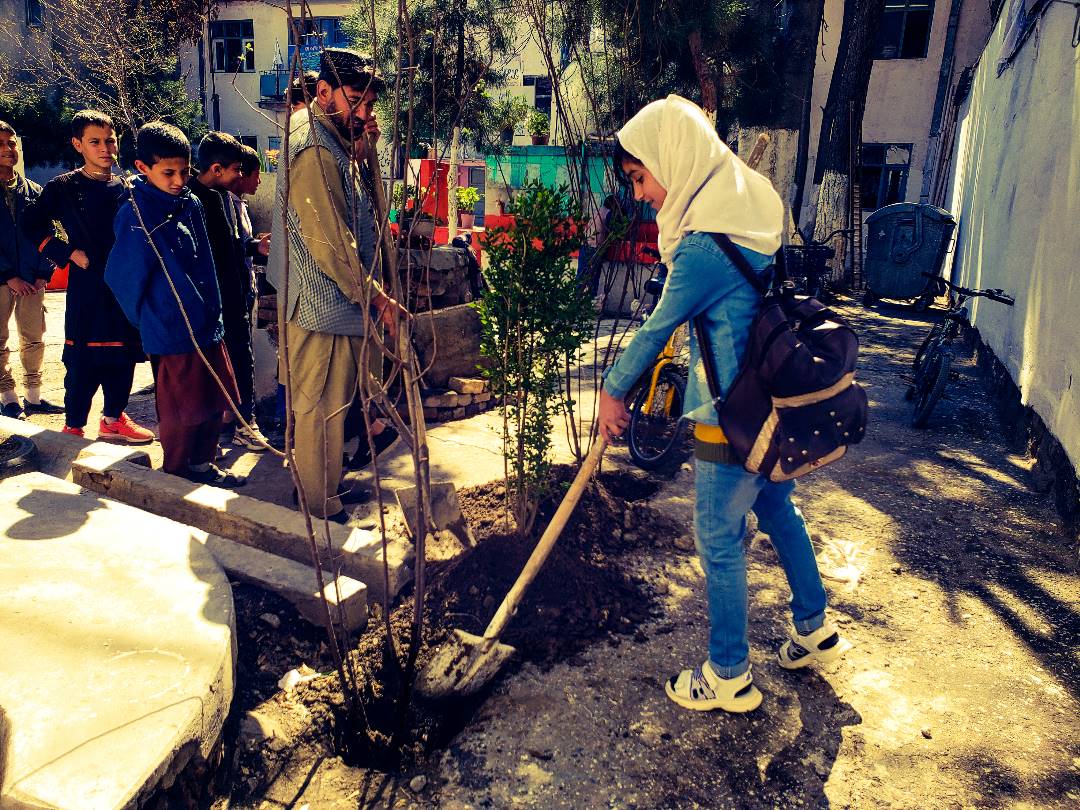
Decades of war and violence have destroyed many natural areas in Afghanistan. Through this project, which you made possible, hundreds of students and teachers are working together to seed hope as they plant trees. Beyond the factual story of combating climate change, planting trees signals hope and support for a future in which Afghanistan will not always be in a state of war or violence. Instead, Afghanistan is a place where communities can work together to build a peaceful country.
Our community of peacemakers’ project of planting trees in Kabul seeds many immediate benefits. In terms of knowledge sharing, this project promotes the planting of trees as a lifestyle. Students and teachers share a sense of ownership because they put those trees into the ground, where their roots can take hold. Students are also responsible for watering them and ensuring they don’t break until they gain enough strength to stand on their own. This tree planting project fostered a positive sense of competition as students worked hard to see who could shovel more dirt while it also empowered the students to work together to make their city green. As a practical component of project-based learning, planting trees together brought home the dangers of deforestation, which threatens Afghanistan. Nowadays, trees cover just 1.5% of the country’s landscape.
Air Pollution in Afghanistan
Afghanistan’s poor air quality is caused by a confluence of factors. Geographically, Afghanistan is a landlocked country bordered by Pakistan, Iran, and China. As a result, it suffers from those countries’ pollution problems.
Climate change has brought on long and frequent droughts. Less rainfall means that air pollutants are washed away less frequently. Brick kilns and small-scale smelting plants cause air pollutants—burning wood, coal, rubber, and trash further soil the air. Poor quality fuel and old cars further exacerbate air pollution, especially in urban areas such as Kabul.
Project Impacts on the Environment
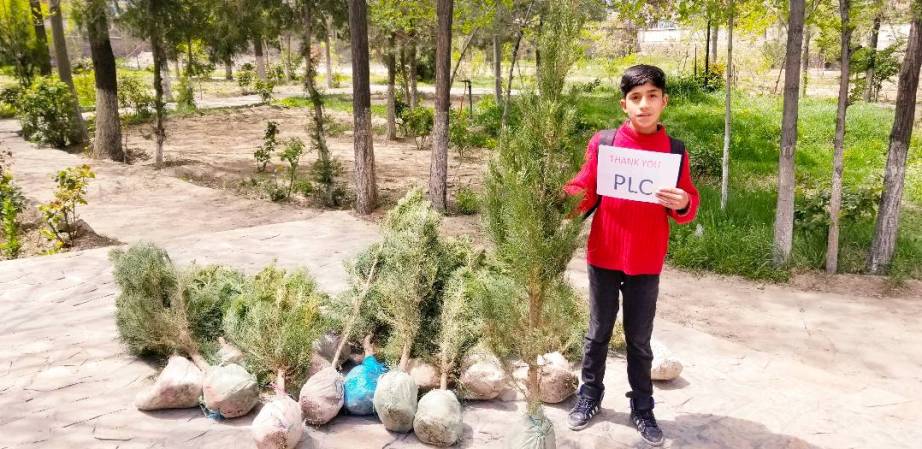
Besides affording students the opportunity to be in nature and work collaboratively towards a shared outcome, this project delivers broader impacts. Planting trees mitigates climate change because trees take carbon dioxide out of the air and store carbon in trees and soil. In return, the trees release oxygen back into the air. As the trees grow, they will give cooling shade, block the cold wind in winter, save underground water, and reduce temperatures as their leaves reflect heat upwards. They prevent flooding and soil erosion by absorbing stormwater. Finally, trees offer communities a shared common place to meet and build ties. Plus, trees are pretty, and their wonder makes us feel invigorated, as if anything, especially a world without violent conflict, is possible.
*Not their real name

